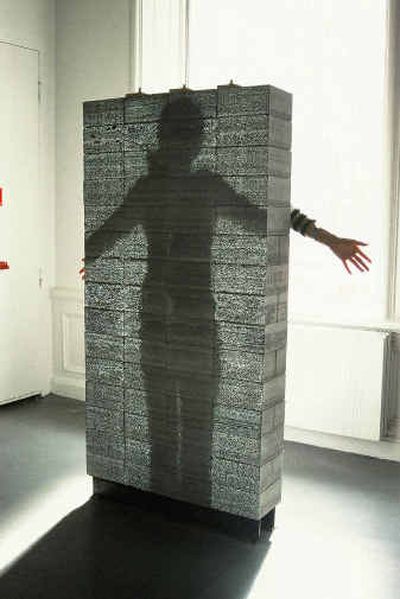See-through concrete

WASHINGTON — It used to be only Superman who could see through concrete walls, but an exhibit at the National Building Museum shows mere mortals can do it too. Called “Liquid Stone,” the show features variations of translucent concrete, a newfangled version of the old construction standby that offers a combination of aesthetics and practicality. One display is a wall of translucent concrete blocks. When someone stands in front of it and light is shone from behind, the person’s shadow can be seen clearly on the other side. “I think it’s beautiful in itself, so it might be attractive in a restaurant or a hotel,” said G. Martin Moeller Jr., the museum’s senior vice president. “But it might also be used in an indoor fire escape where you wanted light to come through in case of a power failure. It could become a lifesaver.” The translucent blocks are made by mixing glass fibers into the combination of crushed stone, cement and water, varying a process that has been used for centuries to produce a versatile building material. The process was devised by Hungarian architect Aron Losonczi in 2001. “The idea came from a work of art I saw in Budapest,” he said in a telephone interview from Csongrad in southeast Hungary. “It was made of glass and ordinary concrete, and the idea of combining the two struck me. Then I went to Stockholm to do post-graduate work in architecture and it developed there.” One of the first demonstrations was a sidewalk in Stockholm made of thin sheets of translucent concrete. It looks like an ordinary sidewalk by day but is illuminated at night by lights under it. A company in Aachen, Germany, called LiTraCon for “light transmitting concrete,” makes translucent blocks and plans to have them market-ready this year. Andreas Bittis, in charge of marketing, said that thus far, they have mainly been used in demonstration projects, such as the Stockholm sidewalk. Bittis has many ideas for practical uses. “Think of illuminating subway stations with daylight,” he suggested in an e-mail. Or using the concrete for speed bumps and lighting them from below to make them more visible at night. Translucent concrete is strong enough for the uses for traditional concrete, and chemical additives can greatly increase the strength. Moeller pointed out, however, that until demand increases, experimentation continues and production costs fall, the price of any new product will be significantly higher than similar older products. Will Wittig, who teaches architecture at the University of Detroit Mercy, has developed concrete panels shown in the exhibit that in some places are only a tenth of an inch thick. He said he has ideas about an all-concrete building, part of which would consist of ordinary opaque concrete and the translucent kind. Inventor Thomas Edison had the idea of an all-concrete house almost a century ago. Though he worked on it for years and spent a lot of money, the idea never caught on. Today’s concrete buildings have skeletons of steel, but Moeller said that could become obsolete with the development of a recently invented self-reinforcing concrete, though that may be many years off. The Lafarge Group, a French firm that says it is the world’s largest producer of concrete, sponsored the exhibit and is showing off a recent variety called “Ductal” that does not need steel reinforcement. The exhibit shows how a light rail terminal has been built in Calgary, Alberta, almost entirely of Ductal, with concrete arches spanning 20 feet and the concrete only a quarter-inch thick. A smooth-textured, tubular sample is shown in the exhibit. Known to the museum staff as “the pretzel,” it looks like a long and hopelessly tangled garden hose. Moeller said old-fashioned concrete has no give at all, but synthetic fibers added to the mix give some flexibility without losing strength. Lancelot Coar, an artist, architect and engineer in Washington, is working on the use of fabric as reinforcement since it’s more flexible than steel. The sample in the exhibit shows how it could give designers more freedom in using curved forms in concrete. “Liquid Stone” will be on view though Jan. 23.